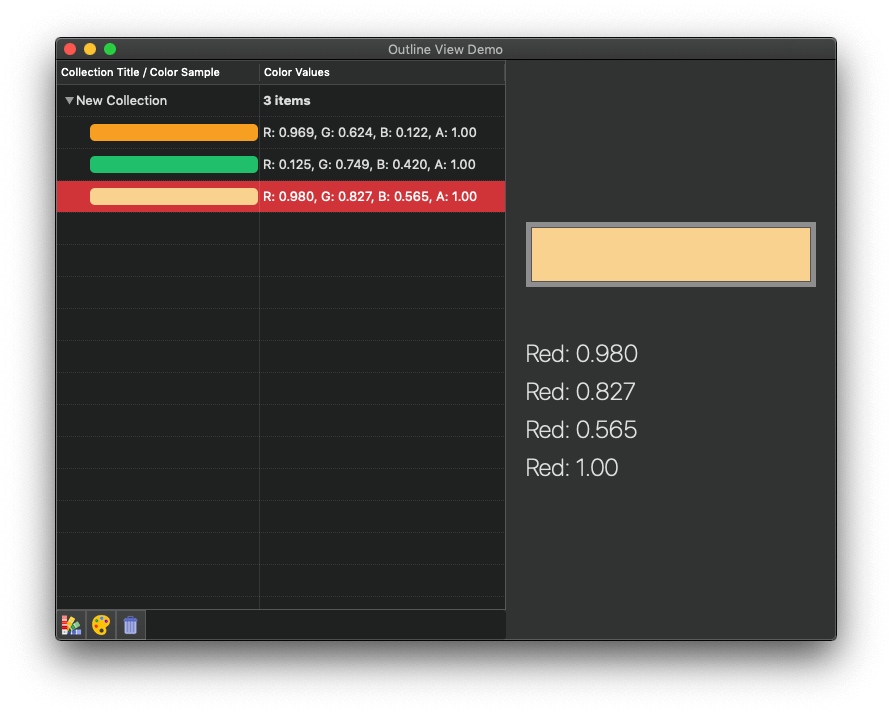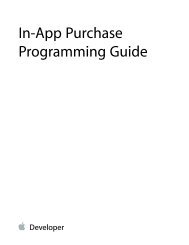
- #Mac app programming guide mac os x
- #Mac app programming guide update
- #Mac app programming guide code
- #Mac app programming guide mac
Let myVariable: String = "some string here" Available platforms However, it does add clarity, especially to developers that may be touching the codebase after you’ve worked on it.
#Mac app programming guide code
This means you can write code like the following snippet, and Swift will see that myVariable is a String type, because it has a String assigned to it.ĭevelopers can still perform strong typing for clarity by doing this, but it is unnecessary. With Swift, Apple decided to keep strong types, but allow the compiler to automatically infer the type based on the objects assigned to a variable. With Objective-C and Swift, object types are strongly typed-meaning, the compiler must know exactly what type of object (string, array, dictionary, custom object, etc.) needs to be stored in memory for a particular variable. Image: Cory Bohon/TechRepublic Type inference A new window will appear, and you can enter Swift code to test things.įigure A Playgrounds are a place to evaluate and test code without creating an entire iOS or OS X project first. To create a new Swift Playground in Xcode, open Xcode and select File | New | Playground. Inside of Xcode, it is known as Playgrounds, allowing developers to write Swift code, and have it evaluated immediately, printing out the results in the sidebar ( Figure A). The REPL is available in the command line and Xcode. Objective-C and Swift are compiled languages, despite Swift having a REPL (Read-Eval-Print Loop) for testing that typically only supports interpreted languages. SEE: All of TechRepublic’s cheat sheets and smart person’s guides REPL Say goodbye to header files, and hello to cleaner and leaner code. swift file that contains typical header information, properties and all of the class defines into a single file. Swift gets rid of this practice, allowing developers to write a single. Because of that, Objective-C made use of header files that publicly declared its functions and definitions. Objective-C was based on C, but added OOP paradigms to the language through object messaging. Here’s a look at the main differences between Objective-C and Swift. Swift does bring a lot of modern programming niceties to Apple’s platforms. Apple has not at this point announced that Objective-C will be phased out however, developers are choosing Swift over Objective-C when starting new projects or modernizing existing ones.

Swift is a new programming language created by Apple initially to supplement Objective-C and modernize Apple’s programming language offerings, but as of 2021, is ultimately looking like a replacement to Objective-C at least for front-end development by third-party app developers.
#Mac app programming guide update
Objective-C likely still has a long life, as Apple has yet to update its own Frameworks to be written in Swift. While Apple hasn’t announced plans to sunset the Objective-C language (in fact, Apple is still updating it), Swift is rapidly overtaking Objective-C to become more popular on Apple’s platforms.
#Mac app programming guide mac
SEE: 31 Mac keyboard shortcuts business users need to know (free PDF) (TechRepublic) How does Swift differ from Objective-C? Swift has grown tremendously since its inception and introduction at WWDC 2014, and the developer community around this language continues to grow. This is one reason it’s becoming the singular programming language for Apple Platforms (iOS, iPadOS, macOS, tvOS, watchOS) and beyond as it’s compatible with Linux, servers and more. Swift is a language that is easier to learn and easier to read, giving it a lower barrier of entry when compared with older languages like Objective-C.

#Mac app programming guide mac os x
Swift is available in the most recent versions of Xcode and can be used to build apps from iOS 7 or later, and macOS devices dating back to Mac OS X 10.9 or later. Swift is based around modern practices that are also seen in other modern programming languages like JavaScript, Ruby and Kotlin. Swift is a new programming language from Apple, built by Apple, that builds on the techniques learned in Objective-C, but modernizes them to include shorter syntax and easier readability, maintainability and safety to prevent crashes. SEE: Apple’s Swift programming language: Cheat sheet (free PDF) (TechRepublic) What is Swift? Swift 1.0 was released in September 2014. Swift is more than 2.6x faster than Objective-C and more than 8.4x faster than Python. In 2010, Apple started developing Swift, a new programming language that would rival Objective-C in a few areas–specifically, type safety, security, and better on-hardware performance. Objective-C called NeXT and Apple home where it was the default programming language for NeXTSTEP, OS X and iOS. It started as a programming language that bundled object-oriented programming (OOP) with the likeness of the C programming language. Objective-C has won the hearts of many developers.


 0 kommentar(er)
0 kommentar(er)
